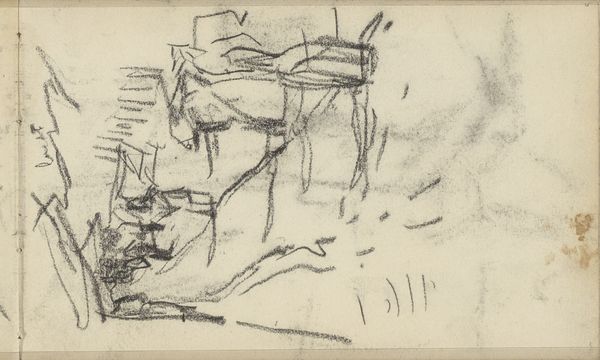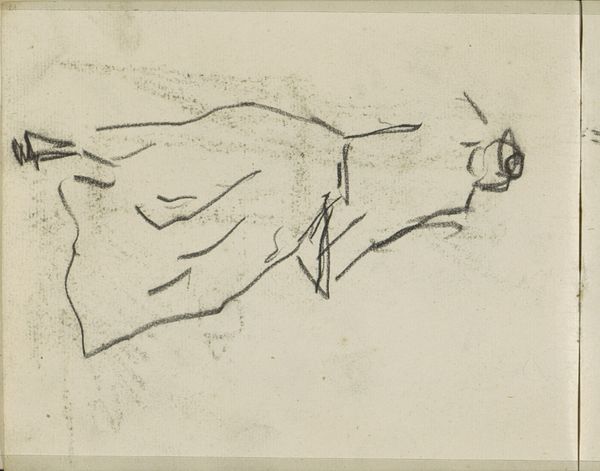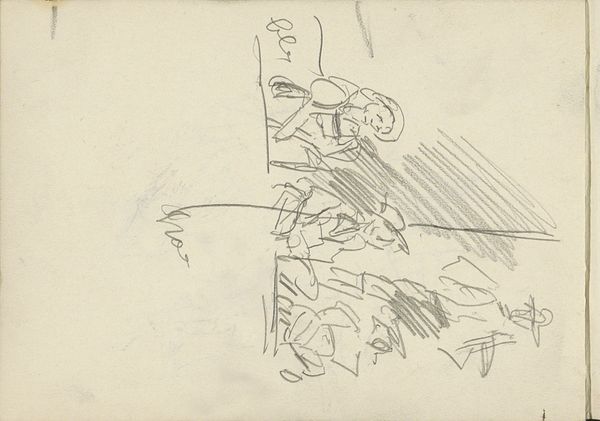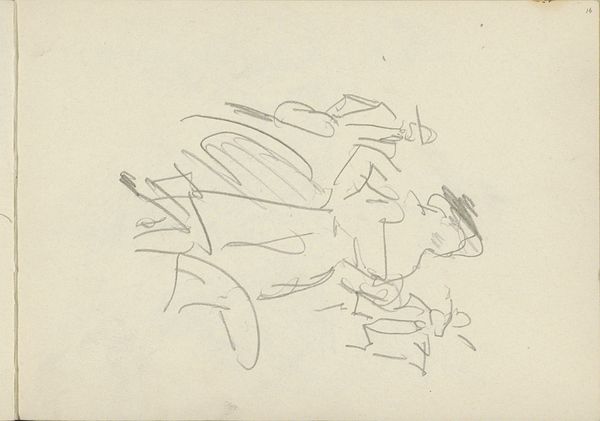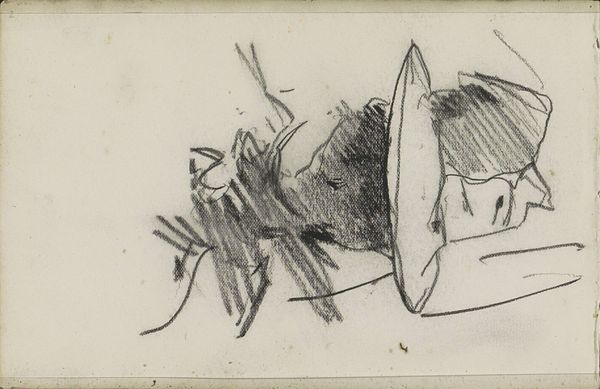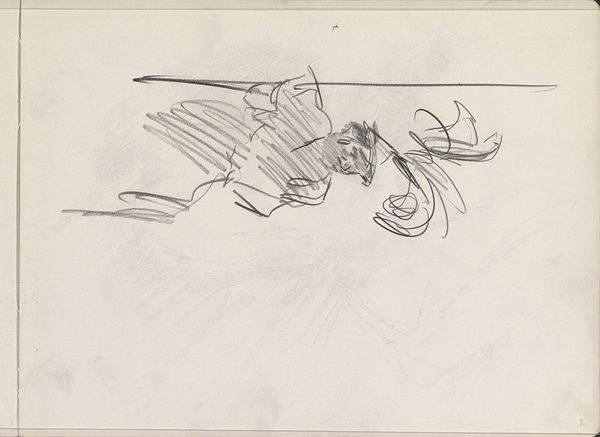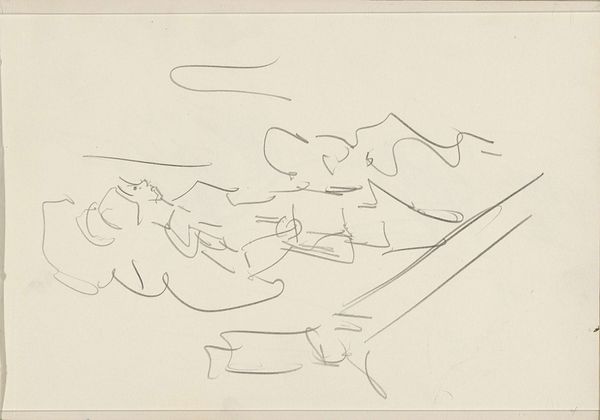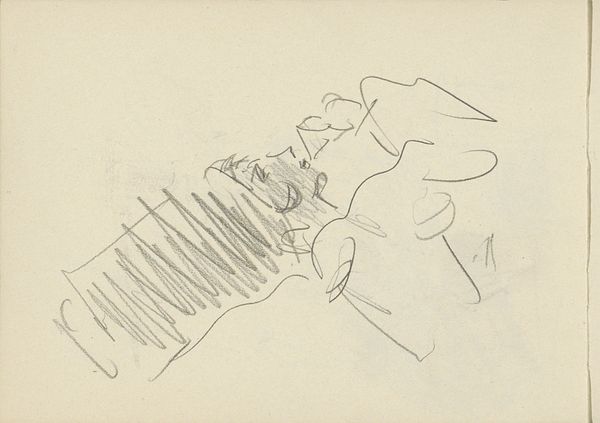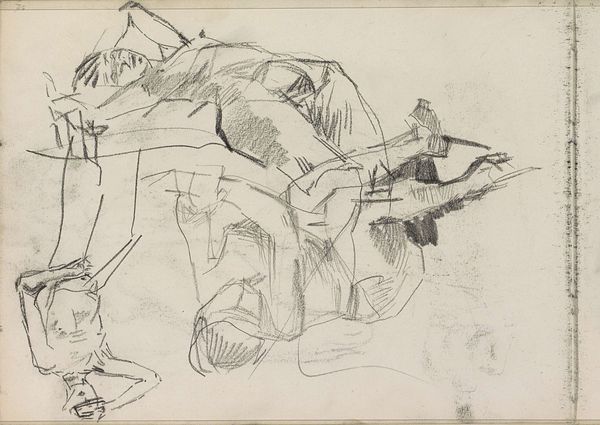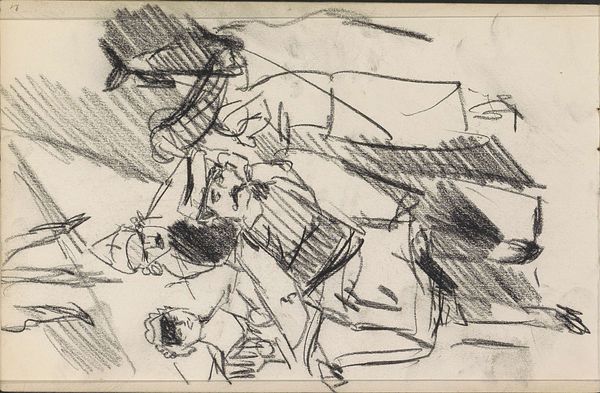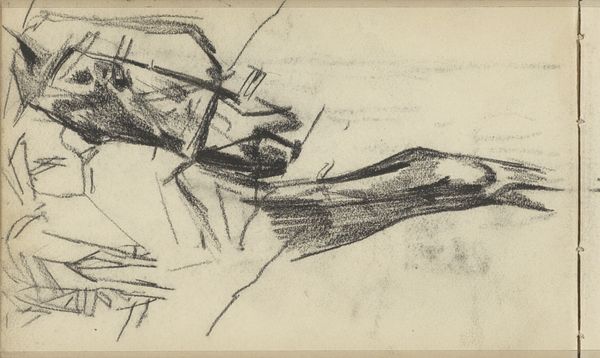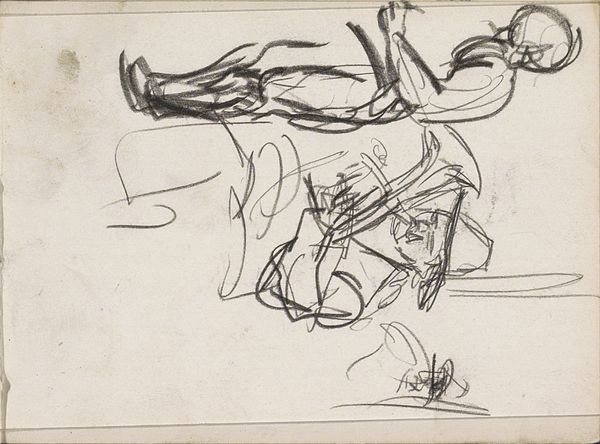
drawing, pencil
#
drawing
#
impressionism
#
figuration
#
pencil
Copyright: Rijks Museum: Open Domain
Curator: Immediately striking, isn't it? The jumble, the swift lines suggesting movement, it has a raw, almost frenetic energy to it. Editor: Raw is right. It feels less like observation, more like a capture of something fleeting, like trying to grab smoke. What exactly are we looking at? Curator: This is “Figuurstudies,” or “Figure Studies,” by George Hendrik Breitner, sketched in pencil around 1886 to 1890. It resides here at the Rijksmuseum. Editor: Studies indeed. There's a captivating anonymity to these sketched figures, but not cold; more intimate. The rough quality invites empathy in a way a polished piece wouldn’t. I get a sense of vulnerability… Curator: Vulnerability can often emerge from the immediacy of impressions, don’t you agree? Consider the symbolic weight of sketches themselves, offering an unobstructed window into the artistic psyche. It speaks volumes about the artist and cultural currents. These studies echo the rise of Impressionism—capturing subjective realities over rigid formalism. Editor: Exactly, and that’s what keeps me interested. It's unfinished and unpolished but not vague at all. We’re looking at drawings that allow us access to a cultural moment where truth wasn't so dependent on neat renderings but human gestures. Curator: The convergence of history and art makes you consider how time collapses, right? The symbolism lies not only in its historical impressionism, but also its demonstration of pure emotive presence. These figures might exist in 19th-century Amsterdam, but they speak of humanity transcending time and place. Editor: Yes! A little breath of eternity, snatched from daily life and held on paper by pencil scratches. It is as he was seeing something that escapes both of us... The drawing, then, makes space for our shared feeling instead of aiming at one single understanding. Curator: Precisely! "Figure Studies" makes us wonder—what did Breitner see that day, and, more intriguingly, what do we see in its echo? Editor: Beautifully put. An echo that subtly adjusts the colors and texture of how we feel about it long after it was created, even now, as we talk about it.
Comments
No comments
Be the first to comment and join the conversation on the ultimate creative platform.
